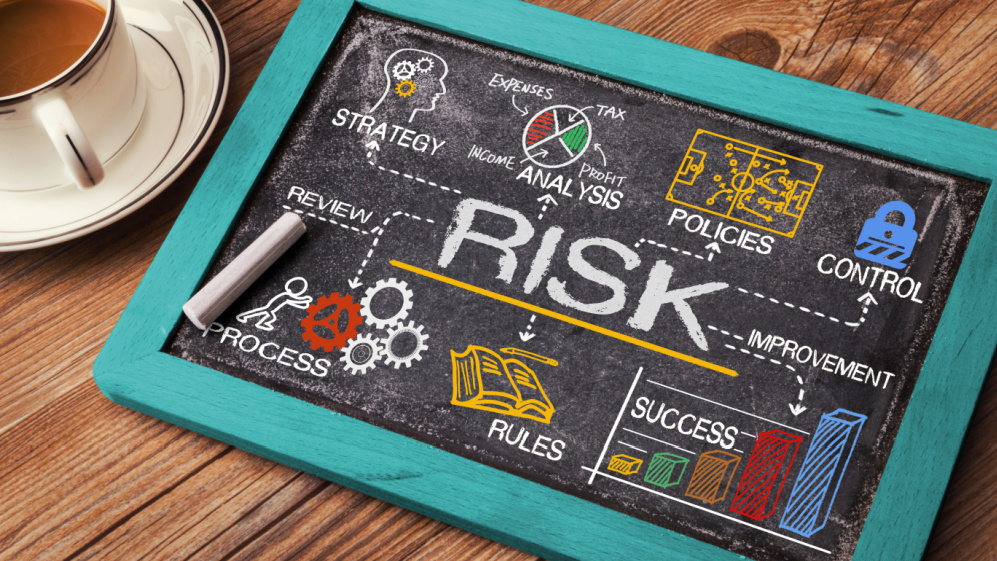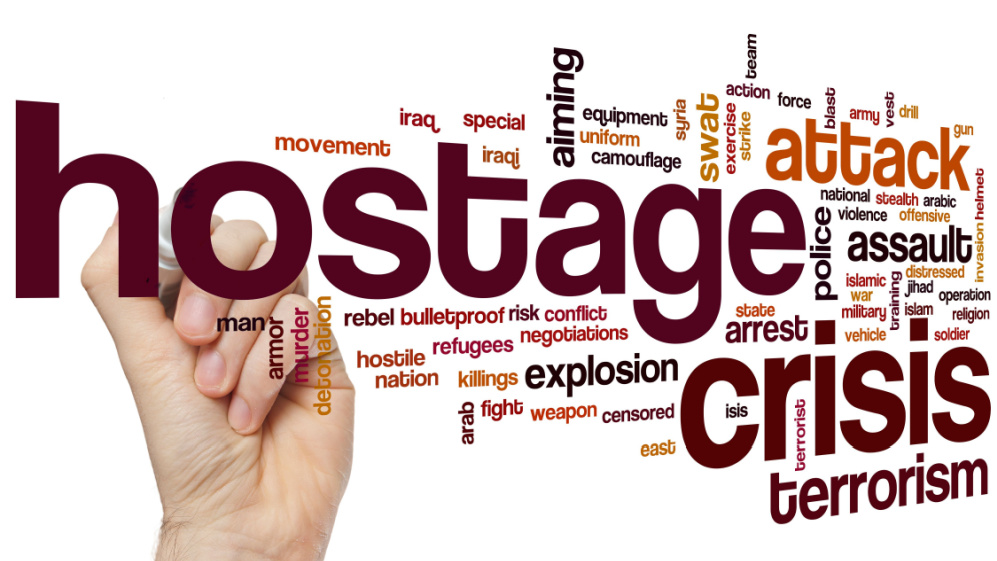Risk Intelligence (RI): A Crucial Element in Crisis Leadership & Communications

As we say at Fallston Group – “Anybody with an internet connection or recording device can wreak havoc on your brand.” In this fast-paced intersection of technology and business, professionals across various domains face the challenge of managing risks and proactively shaping the trajectory of organizations. At Fallston Group LLC (Expert Reputation Management | Fallston Group), a global reputation agency, we understand that Risk Intelligence (RI) is more than a buzzword; it’s a strategic mindset that underpins effective Crisis and Reputation Management – specifically, leadership, strategy, and communications. Please make no mistake: crises cost time, money, customers, careers, and in the worst-case scenarios, freedom and lives. We routinely ask our clients, ‘Are you ready to meet the moment?’ Often, the authentic answer is ‘no.’ Enter risk intelligence.
Fallston Group Joins Fox45 to Discuss the Baltimore Ravens’ Recent Success and Leadership Qualities.

Stay Safe During the Holidays!

The holiday season is a time for joy and celebration, but it’s also when package theft and security concerns escalate. With more than 1.7 million packages going missing or stolen each year in the USA, totaling up to $25 million in lost goods and services, it’s crucial to take proactive steps to protect your deliveries and ensure your personal and home safety during this festive time. Here are a few practical tips: Protect Package Deliveries Require a Signature for Delivery: Consider requiring a signature for your package deliveries. This adds an extra layer of security, ensuring your packages aren’t in the wrong hands. Use Package Tracking: Leverage the tracking features provided by delivery services like UPS or FedEx. This allows you to monitor the status and location of your packages in real-time, providing valuable information about their whereabouts. Install Security Cameras: Set up security cameras around your home to deter potential thieves. Visible cameras act as a powerful deterrent, and in the unfortunate event of theft, they can provide crucial evidence for law enforcement. Deliver to a Secure Location: If possible, have your packages delivered to a secure location, such as a locker or a trusted neighbor’s house. This minimizes the risk of packages being left unattended on your doorstep. Stay Safe While Shopping Be Aware of Your Surroundings: Stay alert and conscious of your surroundings when shopping at a mall. Avoid distractions and stay focused on your surroundings to spot any potential risks. Keep Personal Belongings Secure: Keep your personal belongings, such as wallets and phones, secure and within sight. Consider using a crossbody bag or a backpack with secure closures. Avoid Displaying Valuables Openly: Refrain from openly displaying valuable items, costly jewelry or substantial amounts of cash. Keep such items in discreet and secure locations. Use Well-Lit and Populated Areas: Opt for well-lit and populated areas when shopping. Avoid dark or isolated corners, as they provide opportunities for theft or unwanted incidents. Trust Your Instincts: Listen to your instincts. If something feels off or uncomfortable, don’t hesitate to seek assistance from mall security or store personnel. Park Safely Park in Well-Lit Areas: Choose well-lit parking spots close to the mall entrance. Well-lit areas deter criminals and provide a safer environment. Avoid Isolated Spots: Avoid parking in isolated areas, as they can make you an easy target. Opt for spots near security cameras and with good visibility. Lock Your Car: Always lock your car and roll up windows, even if you only step away for a brief time. This simple step can prevent opportunistic theft. Hide Valuables: Conceal valuables in your car or take them with you. Don’t leave tempting items in plain sight, as it may attract unwanted attention. Protect Your Home Use Timers for Lights: Create the illusion of an occupied home by using timers for lights. This can deter burglars who may be monitoring neighborhoods for vacant houses. Ask Neighbors for Assistance: Request neighbors to collect your mail and any packages left at your doorstep—an accumulation of mail signals an empty home. Avoid Social Media Announcements: Refrain from sharing your travel plans on social media. Broadcasting your absence can make your home a target for burglars. Ensure Doors and Windows Are Locked: Prioritize the basics – lock all doors and windows before leaving your home. This is a simple yet effective step to enhance security. Consider a Security System: Invest in a home security system for added protection. Modern systems offer remote monitoring and instant alerts in case of suspicious activity. Dispose of Packaging Discreetly: When discarding packaging from expensive purchases, do so discreetly. Avoid leaving boxes at the curb that showcase the valuable items inside. During the holidays, taking proactive steps to safeguard your deliveries, shopping experiences, and home security is essential. By implementing these practical tips, you can reduce the risk of package theft and enhance overall safety during this festive time. Stay vigilant, trust your instincts, and enjoy a secure and joyful holiday season!
Hostage Negotiations – A Blueprint for Everyday Life

Just a few short weeks ago, Fallston Group was honored to have delivered the opening keynote at the National Tactical Officer’s Association’s (NTOA) Crisis Negotiations Conference in Scottsdale, Arizona. There were more than six hundred crisis negotiators sharpening their craft to diffuse and deescalate life’s most difficult situations and save lives. Yes, these are ordinary men and women thrust into extraordinary circumstances at a moment’s notice. It’s an awesome responsibility where these chosen law enforcement strategists must play games of chess, not checkers. In our daily lives, the traits that define successful hostage negotiators can serve as valuable guiding principles, helping us navigate challenges, communicate effectively, and build stronger connections with those around us. Don’t we need more human connection in today’s world? Let’s look at some of the key attributes needed to competently manage this high-stakes game and normal everyday life. Communication: Mastering the art of effective communication is a universal skill that transcends crisis scenarios. Whether in personal relationships, the workplace, or community interactions, the ability to express oneself clearly and assertively fosters understanding and mutual respect. By articulating thoughts with precision, we can enhance our capacity to influence positive outcomes. Let’s not forget the most important part of the communication process is the ability to be an effective listener. Empathy and Emotional Intelligence: In the fabric of everyday life, empathy and emotional intelligence form the foundation of meaningful connections. Understanding the emotions of others allows us to build stronger relationships and navigate conflicts with compassion. In family dynamics, friendships, and professional settings, the ability to empathize fosters a sense of unity and cooperation. Empathy is also the single attribute that sets the best leaders in the world apart from others. Adaptability and Flexibility: Life is inherently dynamic, and the ability to adapt and be flexible is paramount. Whether facing unexpected challenges at work, adjusting to changes in personal circumstances, or navigating shifting priorities, embracing adaptability ensures resilience and the capacity to thrive in the face of uncertainty. I had an old sergeant once tell me, ‘The only thing in life that’s constant is change. As soon as you realize this, you’ll be better off.’ I think he noticed my inflexibility at such a young age! Patience and Resilience: Every journey comes with its share of setbacks and obstacles. Patience and resilience equip us to endure hardships, learn from experiences, and persevere in the pursuit of our goals. These traits are invaluable in maintaining composure during challenging times and bouncing back with newfound strength. Yes, it is hard to wait and be patient in today’s ‘hurry-up’ world, but time is often the most important asset you have on your side. Strategic Thinking and Decision-Making: Strategic thinking isn’t limited to boardrooms and crisis situations; it’s a skill that enhances decision-making in all aspects of life. Whether planning personal goals, managing time effectively, or addressing complex issues, strategic thinking guides us in making informed choices that align with our long-term objectives. Research shows that people would rather follow someone who makes a wrong decision than no decision. It’s imperative to create your own future by making decisions, realizing that not all of them will be right. That’s okay; it’s how we learn and become better tomorrow than we were today. The traits of successful hostage negotiators are not confined to high-stakes scenarios. They are principles that, when integrated into our daily lives, empower us to communicate effectively, build meaningful connections, navigate challenges with grace, and make strategic decisions that contribute to our overall well-being and success. By embracing these traits, we cultivate a mindset that not only enriches our individual experiences but also positively impacts the world around us.
Thriving in the Fire: The Complex World of High-Profile Collegiate Athletes in the Era of NIL and Sports Betting – Is it Too Much?

Welcome to the epicenter of collegiate sports, where the pursuit of excellence intertwines with the invisible threads of expectation, social media scrutiny, and the burgeoning realm of sports betting. In Fallston Group’s latest blog, we unravel the multifaceted challenges faced by high-profile collegiate athletes, exploring the relentless pressures that have become synonymous with their pursuit of greatness and financial rewards. The Weight of Expectation: Imagine the weight of expectations from coaches, teammates, the student body, fans, corporate interests, and the media—it’s a pressure cooker where success isn’t just desired; it’s expected. There is no question about the mental and emotional toll this constant scrutiny extracts from athletes striving to meet soaring expectations. The pressure is enormous. Oh, and there is this little thing called academics – isn’t that why athletes are in college anyway? A solid education? Has this become secondary to the seasonal earning power realized by some blue-chip athletes? The Social Media Crucible: The rise of social media has revolutionized how we perceive and engage with all athletes, both amateur and professional. Every move, both on and off the field, is amplified in the digital arena. The impact of this 24/7 visibility on collegiate athletes’ mental health and the challenge of maintaining a balance between their personal and public lives are incredibly hard to manage. Can we allow these ‘kids’ to simply be normal college students? Is that even possible? At Fallston Group, we routinely say that anyone with an internet connection and recording device can wreak havoc on your brand – high-profile collegiate athletes are uniquely susceptible to the pearl and perils of their digital reputation. Commercialization and NIL: College sports introduce a new dimension—sponsorships, endorsements, and the promise of a lucrative professional career. And now, with the advent of Name, Image, and Likeness (NIL) rights, athletes can capitalize on their personal brand. But this opportunity comes with a catch, requiring a delicate dance between sports, academics, and the business side of their careers. The NIL ‘game’ can be played at every level, from a big brand like Reebok engaging LSU women’s basketball star Angel Reese to Oregon football star Bo Nix’s Google Shopping relationship to the lower-profile DIII athlete engaging a local car dealership who earns dollars in exchange for their NIL. Yes, this is a formal business relationship that, make no mistake about it, the business is only engaged in to drive key business metrics – sales and profitability. Gambling: Speaking of profitability amidst this complex landscape, the concept of public gambling adds another layer of intrigue. The stakes are higher than ever, and athletes must contend not only with the pressure to win but also with the knowledge that their performance may influence the bank accounts of those who have a financial interest in the game’s outcome. And if you think that athletes aren’t looking at the betting lines of their games, individual prop bets, and reading their respective sports betting analysis, you’re mistaken. Draft Kings, FanDuel, BETMGM, and many other sports betting platforms have become the digital URL of choice for many. And unfortunately, the athlete’s reputational equity in a gambler’s eyes goes up and down the flagpole with each play. This is a ton of pressure. The Balancing Act: Academic pursuits, high-level competition, NIL rights, the growing influence of sports betting, and the dream of playing professionally—tremendous pressure and opportunity. The tightrope between maintaining peak performance and navigating the potential pitfalls of external pressures requires resilience, strategic thinking, and a very strong support system. The core question: Is it too much?
Long-Term Leadership Gaps Weaken Organizations and Countries

Regardless of where you stand politically, the role of the Speaker of the House in our country is of paramount significance. As the presiding officer of the House of Representatives, the Speaker assumes the responsibility for shaping the legislative agenda, orchestrating the passage of bills, and guaranteeing the efficient operation of the House. Beyond these operational duties, the Speaker plays a crucial role in maintaining the delicate balance of power, acting as a vital check on the executive branch, representing the House as a unified body, and personifying leadership within Congress. The Speaker’s function transcends mere importance; it is indispensable in upholding the public’s trust in the democratic system. Because of the prolonged vacancy in the Speaker’s position, there is consequence, among them being: Legislative Gridlock: The absence of a Speaker can paralyze the House, hindering its capacity to enact vital legislation and causing governmental gridlock, thereby impeding its responsiveness to pressing national issues. Impaired Checks and Balances: The Speaker’s presence is integral to maintaining the delicate power equilibrium between the legislative and executive branches. An absence weakens these checks and balances, risking an overreach of influence by the executive branch in legislative matters. Delayed Response to Crises: During crises, such as the current Middle East crisis, the Speaker guides the legislative response. Their absence can impede swift and effective government reactions when timely legislative action is imperative. Erosion in Public Confidence: According to Pew Research, ‘Public trust in the federal government, which has been low for decades, has returned to near-record lows following a modest uptick in 2020 and 2021. Currently, fewer than two in ten Americans say they trust the government in Washington to do what is right “just about always” (1%) or “most of the time” (15%). This is among the lowest trust measures in nearly seven decades of polling. Last year, 20% said they trusted the government just about always or most of the time. (https://www.pewresearch.org/politics/2023/09/19/public-trust-in-government-1958-2023/) Because Fallston Group focuses on building, strengthening, and defending reputations, let’s take a deeper dive into the erosion of public confidence and negative outflows of the Speaker vacancy: Perception of Dysfunction: The vacancy of the Speaker’s position creates a perception of government dysfunction, eroding public trust in the efficacy of the political system, thereby undermining the public’s faith in its capability to function effectively. Political Polarization: Exacerbated political polarization further entrenches the perception that partisan interests supersede national concerns, thereby deepening divisions within the government. Inaction on Key Issues: The inability to prioritize and advance pivotal national matters, such as healthcare, immigration, or climate change, in the Speaker’s absence frustrates the public and creates a sense of neglect. Public Distrust in Leadership: The Speaker embodies leadership within Congress, and the lack of their presence raises questions about the competence and leadership of elected officials. Consequently, cynicism and distrust in those in power intensify. Continuity is important at every level of leadership. Voter Apathy: Governmental dysfunction resulting from the Speaker’s absence discourages civic engagement and voter participation, potentially leading to a decrease in voter turnout and civic involvement, as the public becomes disillusioned with the political process. Voters must be heard, and apathy causes a slow, steady breakdown in our system. Regardless of political party, the Speaker of the House is more than a figurehead; their presence is integral to the proper functioning of our government and the preservation of public trust in the democratic system. The potential consequences of an unoccupied Speaker’s chair extend far beyond mere governance – they encompass the very pillars of our nation’s democratic foundation. Fill the post.
The Taylor Swift Effect: How the NFL, DraftKings, and Others Harnessed Taylor Swift’s Star Power

Today, very few brands hold as much influence and star power as Taylor Swift. With an ever-growing fan base, Swift has proven to be a game-changer in the music industry, sports, entertainment, and marketing. Swift’s remarkable effect on the NFL can be seen through her impact on Travis Kelce, a Kansas City Chief’s offensive superstar. But first, let’s take a look at the numbers: Bears vs. Chiefs – Swift’s 1st NFL engagement – viewership (ages 18 – 49) increased by over 60%. Jets vs. Chiefs – Swift’s 2nd NFL engagement – 17 televised cutaways to Swift; 2 commercials for Swift’s new movie. Travis Kelce Jersey Sales – increased over 400% after the Bears vs. Chiefs game. Kelce’s Instagram gained over 860,000 followers in the last 7 days. The NFL’s official social media accounts posted about Swift over 30 times last week, resulting in more than 170 million impressions. DraftKings “Feeling 22” prop bet featured Travis Kelce over a 22-yard reception. Swift’s rise to worldwide fame is a testament to her immense talent as a musician and songwriter, but not to overlook her goodwill and clean reputation. Over the years, she has cultivated an exceptionally loyal fanbase, known as “Swifties,” who hang glom onto her every word. This level of devotion and influence extends far beyond the music industry, transcending into the world of sports and beyond. However, it all starts with Swift’s authenticity and credibility, enhancing the brands she associates with – we call this the halo effect. Known for her honest songwriting and genuine personality, Swift has fostered a deep connection with her audience. When she aligns herself with a brand, her fans view it as a sincere endorsement, increasing brand trust and credibility. This has value for those in her brand sphere. Travis Kelce, a standout tight end for the Kansas City Chiefs, is one of the NFL’s most talented players. Beyond his remarkable on-field abilities, Kelce has become known for his vibrant personality and appearances at Swift’s concerts. By personally and publicly aligning himself with Swift, Kelce has tapped into her fanbase, boosting his own popularity and expanding his reach beyond the football field. Now, let’s just say for a moment that this is ‘love’, not ‘business.’ For the record! Swift’s positive reputation exudes elegance, grace, and empowerment. By associating herself with brands that reflect similar values, she elevates their brand image in the eyes of consumers. Whether it’s fashion labels or charitable organizations, Swift’s positive aura enhances their reputation and strengthens their connection with consumers. The NFL, recognizing Swift’s influence and appeal, has cleverly leveraged her star power to enhance its brand, attract a wider audience, and increase valuation. Various teams have strategically used Swift songs in their promotional videos, engaging existing fans and intriguing new ones. By associating themselves with the highly successful superstar, organizations can tap into their dedicated fanbase and create a connection with individuals who may have previously been disengaged from the sport. Expanding Brand Reach and Valuation: Beyond the NFL, other organizations have also latched onto the Taylor Swift effect to boost their brand reach and valuation. Companies have utilized Swift’s songs in commercials, events, and social media campaigns to capture the attention of her millions of fans worldwide. The association with Swift instantly boosts brand visibility and credibility, enabling these organizations to tap into her immense influence and connect with new demographics. By partnering with companies that align with her core values, Swift helps consumers build meaningful connections with these brands, ultimately making them more trustworthy and valuable. The relationship between Taylor Swift and organizations like the NFL is mutually beneficial. Swift gains exposure to new audiences who might not typically listen to her music, while organizations gain access to her vast fanbase. This symbiotic collaboration allows for increased brand recognition, market expansion, and, ultimately, increased overall valuation for all. To reiterate, Taylor Swift’s enduring positive reputation increases the value of the brands she associates with. Through her authenticity, broad market reach, amplified brand image, emotional connections, and dedication to social impact, Swift has created a winning formula that brands eagerly seek out. As her career continues to flourish, Taylor Swift’s influence will undoubtedly shape the landscape of celebrity endorsements and contribute to the growth and success of these valuable brands. The Taylor Swift effect on individuals like Travis Kelce, the NFL, and various organizations is a powerful testament to her cultural influence and universal appeal. Swift’s music messages connect with millions of people, and organizations are wise to leverage her star power to expand their reach and increase their brand valuation. As her impact grows, it is clear that Taylor Swift’s presence will remain a force to be reckoned with in both the sports and business worlds. The question becomes…what have you learned? And how can your brand be positively or negatively impacted by those people, places, and things you align with? Oh, and by the way, what is the net-net impact of the brands that align with yours? Yes, your orbit matters!
Fallston Group on Fox News: Top 5 Ways to Enhance School Safety for a Secure Learning Environment

As many across the country are starting their school years, ensuring the safety of students, staff, and visitors within schools is paramount. In today’s world, it’s essential to implement effective measures to create a secure learning environment – both physically and emotionally safe. In this blog post, we will explore the top five ways to improve school safety, encompassing both physical security and the well-being of students. 1. Implement Comprehensive Security Measures To bolster school safety, it’s vital to establish robust security measures. This includes access control systems, surveillance cameras, visitor check-in protocols, and the presence of trained security personnel. Regular security audits ensure these measures stay up-to-date and effective, deterring potential threats and enhancing overall safety. 2. Prioritize Mental Health Support Emotional and psychological well-being is integral. Schools should offer counseling services, anonymous reporting systems, and staff training in recognizing signs of mental distress. Schools create a supportive environment that can prevent potential issues by addressing students’ mental health needs and providing mechanisms for reporting concerns. 3. Develop Comprehensive Emergency Response Plans Being prepared for emergencies is crucial. Regular drills, reliable communication systems, and collaboration with law enforcement agencies ensure that students and staff are well-equipped to respond to crises in the absence of an SRO (school resource officer). Effective emergency response plans help minimize chaos and ensure a coordinated and timely response. Organizational muscle memory is key. 4. Prevent Bullying and Fostering Inclusion Bullying can be a significant safety concern within schools. Implementing anti-bullying programs, establishing reporting mechanisms, and educating students about the harm caused by bullying are essential steps. By nurturing a culture of respect and empathy, schools create a safer and more inclusive environment for all. Bullying is not for free and those who choose to create an unsafe environment should be held accountable. 5. Leverage Technology-Based Solutions In the digital age, technology plays a pivotal role in school safety. Visitor management systems, emergency notification apps, and anonymous tip platforms enhance security and communication. These tools allow schools to respond swiftly to threats and keep parents and guardians informed about their children’s safety. Enhancing school safety is a multi-faceted approach. Schools will create a safer environment where students can thrive academically and emotionally by implementing comprehensive security measures, prioritizing mental health support, developing emergency response plans, preventing bullying, and embracing technology. Collaborative efforts from educators, parents, and the community are key to achieving this goal. Watch Video: https://foxbaltimore.com/morning/crisis-expert-discusses-strategies-for-school-safety-as-students-return-to-classes#
Reputational Benefits of Having a Sound Business Continuity Plan and Disaster Recovery Strategy

In today’s faced-paced and highly motivated court of public opinion, having a robust continuity plan and/or disaster recovery strategy is crucial. We have been mentioning to clients for nearly 15 years – “it’s not a matter of if, but when a crisis will occur.” In our tenured experience, those who take a proactive approach and prepare for smoldering and sudden events have proven to have better growth results when issues arise. on the following are the key areas of importance highlighting why having sound recovery strategies is vital for organizations – we refer to the communications component as a Crisis Communications Algorithm. Businesses must invest time, effort, and resources in creating and implementing these vital plans. Why? Minimize Downtime: When faced with a crisis, whether litigation, investigation, social-media attack, cyber-attack, global pandemic, etc., businesses without a continuity plan often scramble to respond effectively. By having a well-designed strategy in place, companies can minimize downtime and disruptions to their operations, ensuring a prompt recovery and uninterrupted provision of goods and services. We call this ‘Organizational Muscle Memory.’ Protect Revenue Streams: Crises have and will continue to impact a company’s valuation. Without a continuity plan, businesses risk a breakdown in their supply chains, a halt in customer transactions, or the inability to communicate with clients, leading to financial losses and funding withdrawals, which can be difficult to recover from. Implementing a solid crisis plan helps safeguard revenue streams and significant financial setbacks. Companies must protect valuation as crisis cost time, money consumer trust, careers, and in the worst case scenarios, freedom and lives. Safeguard Customer Confidence: Maintaining trust and consumer confidence is crucial for any organization. Stakeholder loyalty can be tested, especially if businesses fail to meet customer expectations due to a lack of preparedness. A well-executed continuity plan helps organizations manage potential disruptions effectively, enabling them to communicate transparently with clients and consumers, minimize service interruptions, and consistently while meeting their customers’ needs. Compliance with Legal and Regulatory Requirements: Numerous industries are subject to legal and regulatory compliance measures that necessitate establishing a disaster recovery plan. Failing to do so can result in financial and legal repercussions. By creating a disaster recovery strategy, businesses will comply with industry regulations, avoid penalties, and ultimately protect their reputation. Protect Data and Information: In today’s digital age, where cyber threats are rampant, having a disaster recovery plan that includes redundancy, data backup, and protection measures is essential. Businesses store vast amounts of critical data, including customer information, financial records, and intellectual property. It’s crucial to have a disaster recovery plan in place to safeguard your customer feedback platform and other vital assets. By having a comprehensive strategy in place, companies can ensure the integrity and availability of their data, even in the face of cyber-attacks, hardware failures, or natural disasters. Maintain Employee Safety and Well-being: Disasters not only affect a business’s operational side but also impact its employee safety and well-being. A well-prepared continuity plan should prioritize employee safety, outlining protocols for evacuation, communication, and overall crisis response. By providing a safe environment and addressing employee needs during and after a disaster, businesses can retain valuable talent and foster a sense of security among their workforce. Remember, the first order of leadership is to provide a safe place to live, work and raise a family. It’s Worth the Investment: The importance of having a continuity plan and disaster recovery strategy cannot be overstated. These plans not only protect businesses from financial losses and legal liabilities but also ensure the well-being of employees while maintaining customer trust. In today’s rapidly changing world, organizations must invest in preparing for various disasters, resulting in a resilient business that can weather any storm. Contact Fallston Group to learn more; info@fallstongroup.com.
The Baltimore Orioles’ Winning Principles: Lessons from The Oriole Way

The Baltimore Orioles’ Winning Principles: Lessons from The Oriole Way In the world of sports, the Baltimore Orioles have stood out in 2023 not just for their turnaround winning record but also for the culture they have built around their success. At the heart of their achievements lies The Oriole Way, a set of principles established by Cal Ripken Sr. that has become synonymous with the franchise. These principles serve as invaluable lessons for corporations seeking to excel in their industries. From strategic player acquisitions to a strong emphasis on teamwork, the Orioles’ winning culture, rooted in The Oriole Way, showcases principles that can be applied to corporate settings. In this blog, we explore these principles and how they can drive corporate success. Strategic Player Acquisitions: The Oriole Way places great importance on strategic player acquisitions. Cal Ripken Sr. believed in carefully assessing the skills, character, and potential of individuals to build a strong team. This principle applies to corporations as well. To succeed, companies must be diligent in acquiring talent that aligns with their values and long-term goals. Investing in the right people from the start sets the stage for future success. Player Development: Cal Ripken Sr. and The Oriole Way emphasized the development of players. They believed in nurturing young talents and providing them with guidance and opportunities to grow. In the corporate world, this principle is equally important. Companies should prioritize investing in their employee’s professional growth, offering mentorship, training programs, and a supportive environment that encourages personal and career development. A commitment to employee development leads to a skilled and motivated workforce. Emphasis on Teamwork: Placing a strong emphasis on teamwork and collaboration, Cal Ripken Sr. believed that success on the field was a collective effort. Similarly, in the corporate world, fostering a culture of teamwork is essential. Encouraging collaboration, effective communication, and creating cross-functional teams can lead to improved productivity, innovation, and problem-solving. Unwavering Work Ethic & Determination: The Oriole Way instilled a strong work ethic and determination in its players. Cal Ripken Sr. believed in giving 100% effort and never settling for mediocrity. This principle holds true for corporations as well. Companies should encourage a strong work ethic and a culture of perseverance. Embracing challenges, maintaining a positive attitude, and striving for excellence are vital for long-term success. Leadership at All Levels: Recognizing the importance of leadership at all levels of the organization, Cal Ripken Sr. believed that leadership should not be limited to a few individuals but should permeate the entire team. Corporations can learn from this principle by nurturing leadership qualities in their employees. Encouraging individuals to take initiative, lead by example, and develop their leadership skills creates a culture of empowerment and accountability. The bottom line – own your space! The Baltimore Orioles’ winning culture in 2023 is deeply rooted in The Oriole Way. These principles of strategic player acquisitions, player development, teamwork, work ethic, and leadership offer valuable insights for corporations aiming to achieve excellence. By embracing these tenents, companies can foster a culture that values diligence, collaboration, continuous improvement, and effective leadership. Incorporating these principles into their corporate DNA sets the stage for long-term success and growth, just as it has for the Baltimore Orioles. As we embrace The Oriole Way, we embark on a journey of achieving greatness, both on and off the field. Now, Let’s Go O’s!
